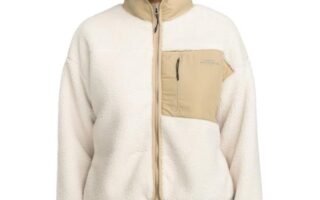In a world woven from a tapestry of diverse cultures and traditions, clothing serves as more than just a means of protection or fashion; it can be an expression of identity, values, and beliefs. Among the myriad styles and garments that reflect the human experience, Muslim clothing stands out with its unique blend of modesty, tradition, and contemporary flair. From the flowing silhouettes of abayas to the intricate patterns of hijabs, each piece offers a window into the rich cultural heritage of the Muslim community, as well as the evolving narratives that shape its expressions today. This article invites you to explore the significance of Muslim clothing, uncovering its historical roots, diverse styles, and the ways it adapts to the modern world, all while respecting the principles of modesty and personal expression. Join us on this journey to appreciate the beauty and complexity of clothing that transcends mere fabric, embodying a profound connection to faith and culture.
Table of Contents
- Exploring the Diversity of Muslim Clothing Traditions
- Understanding Modesty and Its Impact on Fashion Choices
- Innovative Fabrics and Sustainable Practices in Muslim Attire
- Styling Tips for Modern Muslim Women: Balancing Tradition and Trend
- Q&A
- In Conclusion
Exploring the Diversity of Muslim Clothing Traditions
The multiplicity of clothing traditions among Muslims reflects a rich tapestry of histories and cultures, seamlessly intertwined with expressions of faith. Various regions in the world have fostered unique clothing styles that not only adhere to religious standards but also celebrate local customs and available materials. For instance, in South Asia, sarees and shalwar kameez are frequently worn, showcasing vibrant fabrics and intricate patterns, while in the Middle East, the abaya and thobe represent a more minimalist approach, often adorned with subtle embellishments. Each garment serves as a testament to the individual’s cultural identity while remaining respectful of shared religious principles.
In addition to regional differences, traditional wear can vary significantly even within a single country, influenced by factors such as ethnicity, urban versus rural living, and socio-economic status. Noteworthy examples include:
- Indonesia: The baju kurung for women, featuring a loose-fitting tunic paired with a long skirt.
- Turkey: The başörtüsü, a headscarf worn by women, symbolizing modesty and tradition.
- North Africa: The djellaba, a long, flowing robe worn by both men and women, ideal for the warm climate.
Additionally, the significance of color and fabric often varies by region, with certain hues being favored during festivals or specific religious events. A brief overview of popular fabrics and their meanings can be illustrated in the following table:
| Fabric | Region | Significance |
|---|---|---|
| Silk | Middle East | Luxury and elegance |
| Cotton | South Asia | Comfort and everyday wear |
| Wool | North Africa | Warmth and protection |
Understanding Modesty and Its Impact on Fashion Choices
Modesty in fashion is a concept deeply rooted in various cultures and religions, significantly influencing the choices of individuals, particularly within the Muslim community. For many, adhering to modest clothing is not merely a personal preference but a reflection of their cultural identity and spiritual beliefs. This leads to the creation of wardrobes that embrace a balance of style and modesty. Popular options often include items such as:
- Abayas: Flowing robes that provide coverage while allowing for elegant styling.
- Kaftans: Loose-fitting garments that can be both stylish and comfortable.
- Hijabs: Headscarves that add a layer of modesty while offering diverse styling possibilities.
The impact of these choices extends beyond personal expression; it shapes the fashion industry, prompting designers to reimagine traditional styles for a contemporary audience. As a result, brands are increasingly introducing lines dedicated to modest fashion that cater to a growing demand for stylish yet respectful attire. This shift has sparked innovative collaborations, enhancing the representation of modest clothing on runways and retail spaces. Below is a table showcasing some notable trends in modest fashion:
| Trend | Description |
|---|---|
| Layering | Combining different textures and lengths to create depth and interest. |
| Minimalism | Focus on simple silhouettes and neutral palettes for timeless appeal. |
| Prints | Incorporating floral, geometric, and ethnic patterns to express individuality. |
Innovative Fabrics and Sustainable Practices in Muslim Attire
In the realm of Muslim attire, a fresh wave of innovative fabrics is reshaping traditional styles, marrying functionality with elegance. Designers are increasingly exploring materials such as bamboo, organic cotton, and recycled polyester. These fabrics not only enhance the comfort of the garments but also promote breathability, making them ideal for various climates. The integration of moisture-wicking properties and UV protection further ensures that the attire remains practical without sacrificing aesthetic appeal. As sustainability becomes paramount, options like upcycled denim and fabric blends emerge, capturing the ethos of modern fashion while respecting the planet.
Moreover, many brands are adopting sustainable practices, addressing the environmental impact of production. Initiatives include ethical sourcing and fair trade partnerships that empower artisans and promote transparent supply chains. A focus on slow fashion encourages consumers to invest in quality pieces rather than fast, disposable clothing. Below is a concise table showcasing some popular innovative fabrics used in contemporary Muslim wear along with their benefits:
| Fabric | Benefits |
|---|---|
| Bamboo | Natural anti-bacterial, biodegradable, and moisture-absorbing. |
| Organic Cotton | Pesticide-free, soft texture, promotes better farming practices. |
| Recycled Polyester | Reduces plastic waste, durable, and lightweight. |
| Upcycled Denim | Reduces waste, unique styles, and robust fabric. |
Styling Tips for Modern Muslim Women: Balancing Tradition and Trend
When it comes to achieving a harmonious blend of tradition and contemporary fashion, modern Muslim women have a plethora of styling options at their disposal. One effective approach is to layer smartly. Consider starting with a classic long tunic or a modest dress as a base, and then add trendy pieces like a denim jacket, oversized cardigan, or a tailored blazer. Accessories play a vital role too. Opt for chic scarves that can elevate your outfit while maintaining modesty. Consider playing with colors and patterns; a bold, floral hijab can bring life to a neutral ensemble.
Another essential component is the choice of fabric. Lightweight materials such as chiffon or breathable cotton are perfect for layering and can be styled for different occasions. Additionally, take the opportunity to mix and match silhouettes to create visually interesting looks. Here’s a simple guide to effortless combinations:
| Base Piece | Layering Option | Accessories |
|---|---|---|
| Maxi Dress | Denim Jacket | Statement Earrings |
| Long Tunic | Tailored Blazer | Textured Scarf |
| Palazzo Pants | Kimono | Layered Necklaces |
By thoughtfully selecting your base pieces, layering options, and accessories, you can create outfits that resonate with your personal style while reflecting your cultural roots. Every element counts; the magic lies in the details that allow you to express both your identity and a modern sensibility.
Q&A
Q&A: Understanding Muslim Clothing
Q: What is the significance of Muslim clothing?
A: Muslim clothing often reflects cultural heritage, individual identity, and adherence to Islamic guidelines. Modesty is a key principle, with clothing typically designed to cover the body in a manner that aligns with the values of the community. However, it also serves as a form of self-expression, showcasing vibrant colors, intricate designs, and traditional patterns.
Q: What are some common types of Muslim clothing?
A: Various styles exist across the Muslim world, tailored to different cultures and climates. Some popular garments include the hijab (headscarf), abaya (flowy overgarment), jilbab (loose-fitting robe), thobe (traditional men’s garment), and salwar kameez (tunic and trousers). Each piece embodies religious significance while allowing for personal flair.
Q: How does fashion influence Muslim clothing today?
A: Fashion plays a significant role in contemporary Muslim clothing. Many designers are blending traditional elements with modern styles, creating a new wave of fashionable modest wear. This has influenced everything from everyday outfits to high-fashion runways, allowing Muslim women and men to express their identity while feeling stylish and comfortable.
Q: Is Muslim clothing only for religious observance?
A: While many Muslim individuals choose clothing based on religious teachings, others may wear traditional attire purely for cultural reasons or personal preference. In multicultural societies, Muslim clothing can be seen as a celebration of diversity, regardless of one’s relationship with faith.
Q: Are there specific rules regarding modesty in clothing?
A: Yes, modesty is strongly emphasized in Islam. Generally, it is recommended that both men and women wear loose-fitting clothing that conceals the shape of their bodies. For women, this often includes covering the hair and arms and wearing long skirts or pants. For men, keeping the body covered from the navel to the knees is advised.
Q: How has the perception of Muslim clothing changed in recent years?
A: The perception of Muslim clothing has evolved significantly, particularly with the rise of social media and fashion influencers. Many people now view Muslim garments as fashionable and chic rather than purely religious attire. This shift has encouraged greater acceptance and understanding, breaking down stereotypes associated with modest clothing to showcase its beauty and diversity.
Q: What should someone know before asking about someone’s clothing choices?
A: Sensitivity and respect are essential. It’s important to understand that clothing choices can be deeply personal and tied to religious beliefs, cultural heritage, or social identity. If you’re curious, approach the topic gently, and be willing to listen rather than make assumptions. Your openness can foster meaningful conversations and enhance mutual understanding.
Q: How can non-Muslims appreciate and learn more about Muslim clothing?
A: Non-Muslims can appreciate Muslim clothing by engaging in discussions with friends or colleagues who wear it, attending cultural events, or exploring fashion shows that highlight modest fashion. Learning about the history and significance of different garments can deepen understanding and appreciation for the diversity within the Muslim community.
Conclusion:
Muslim clothing encapsulates a rich tapestry of culture, tradition, and personal expression. Understanding its significance encourages appreciation and dialogue in our increasingly interconnected world, celebrating the beauty of diversity while fostering respect for individual choices.
In Conclusion
In a world that thrives on diversity, the exploration of Muslim clothing offers a fascinating glimpse into a rich tapestry of culture, identity, and personal expression. From the elegant drapes of the abaya to the vibrant patterns of the hijab, each garment tells a story that transcends borders and generations. Embracing modesty does not mean sacrificing style; rather, it opens the door to a unique aesthetic that celebrates heritage while adapting to modernity.
As we navigate through the various styles and meanings behind Muslim clothing, it becomes clear that these garments are more than just fabric; they are a profound statement of faith, tradition, and individuality. Whether worn for religious observance or personal preference, these clothes reflect the values and beliefs of those who don them.
As society continues to evolve, so too will perceptions of Muslim fashion, fostering an environment where inclusivity and understanding flourish. In recognizing the beauty and significance of Muslim clothing, we pave the way for greater appreciation of the diverse forms of expression that coexist within our global community. It is in this shared space that we find common ground and celebrate the differences that enhance our collective human experience.


